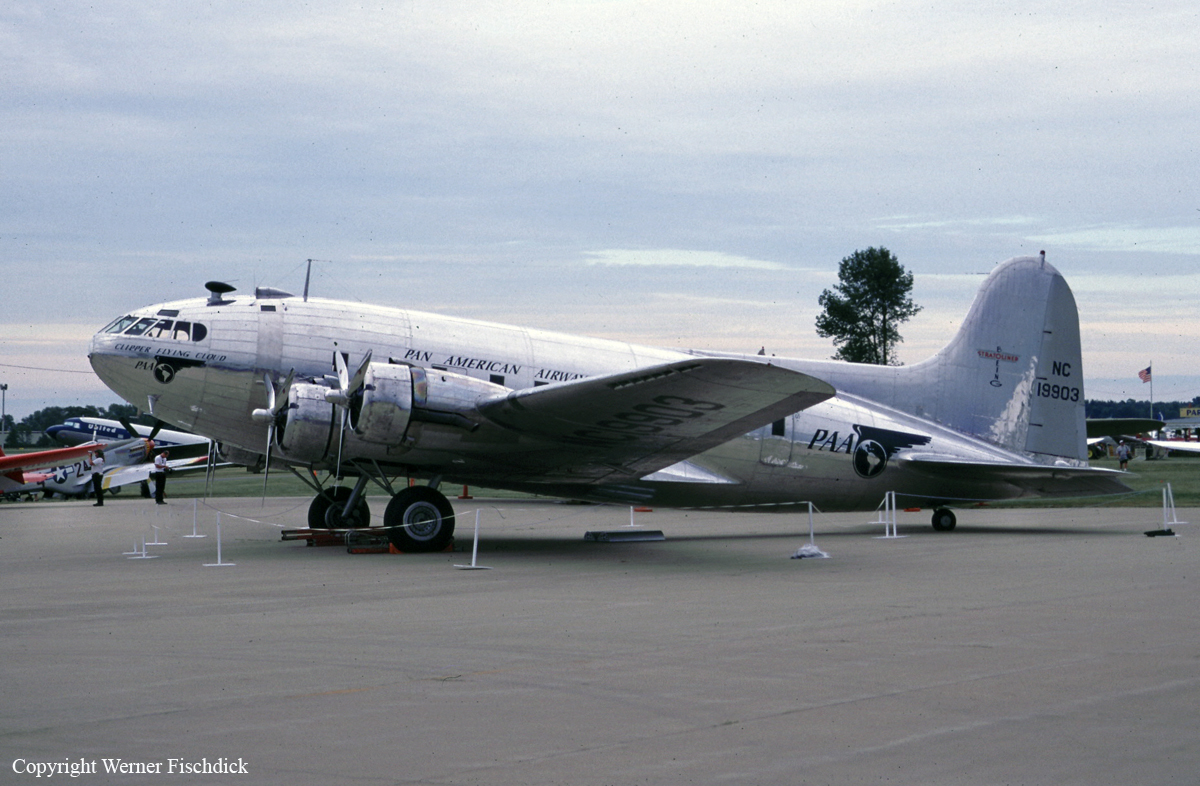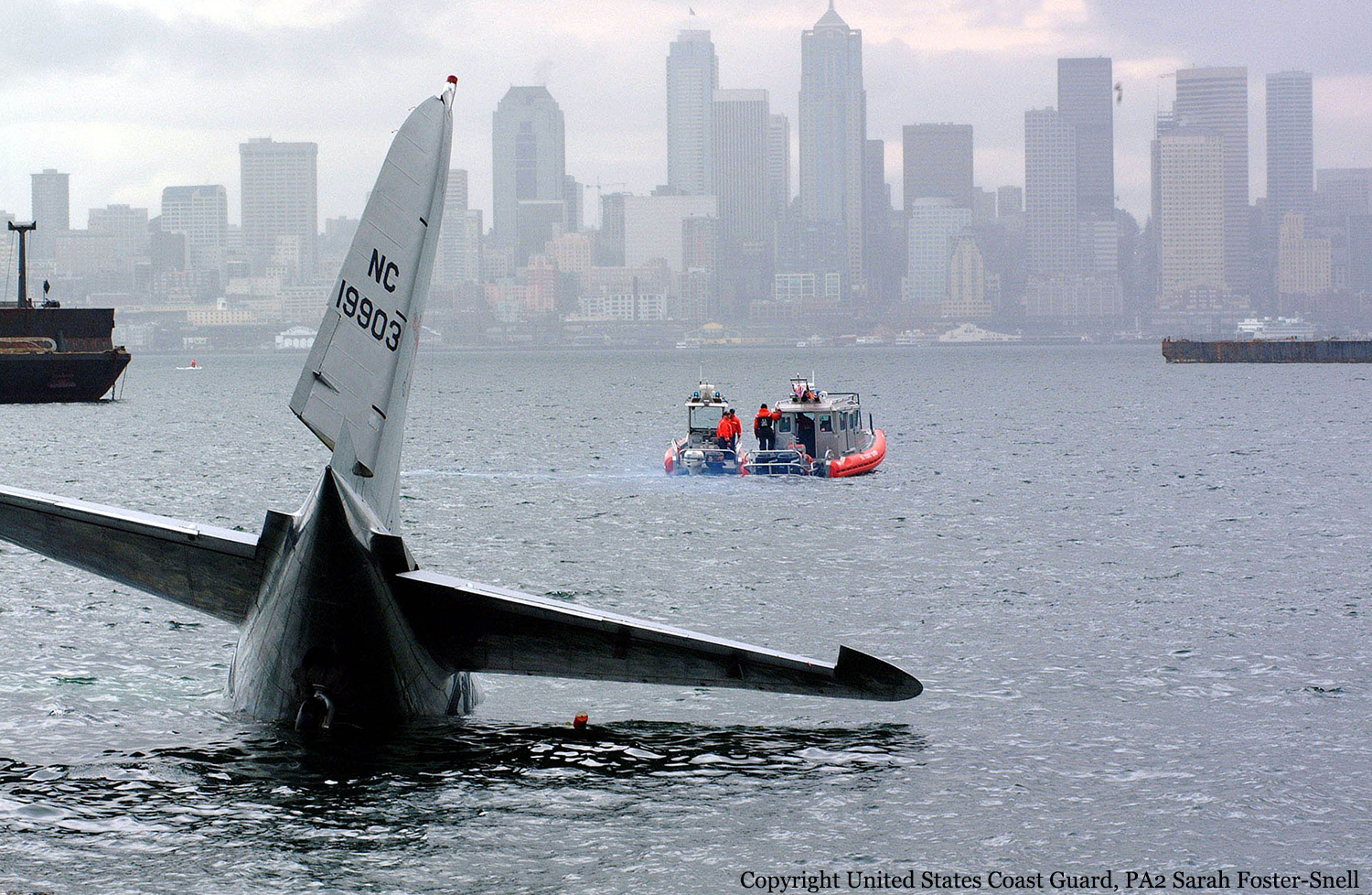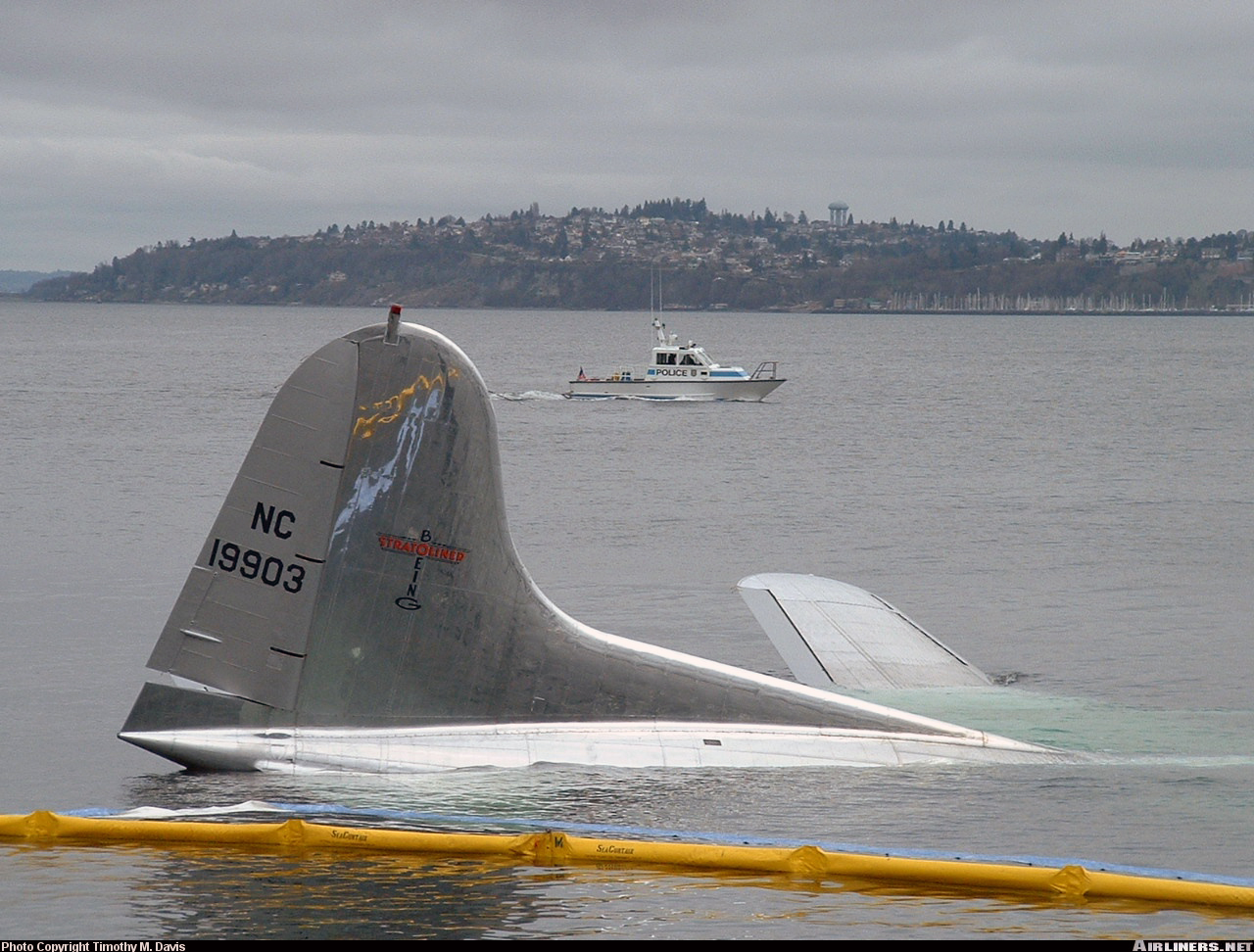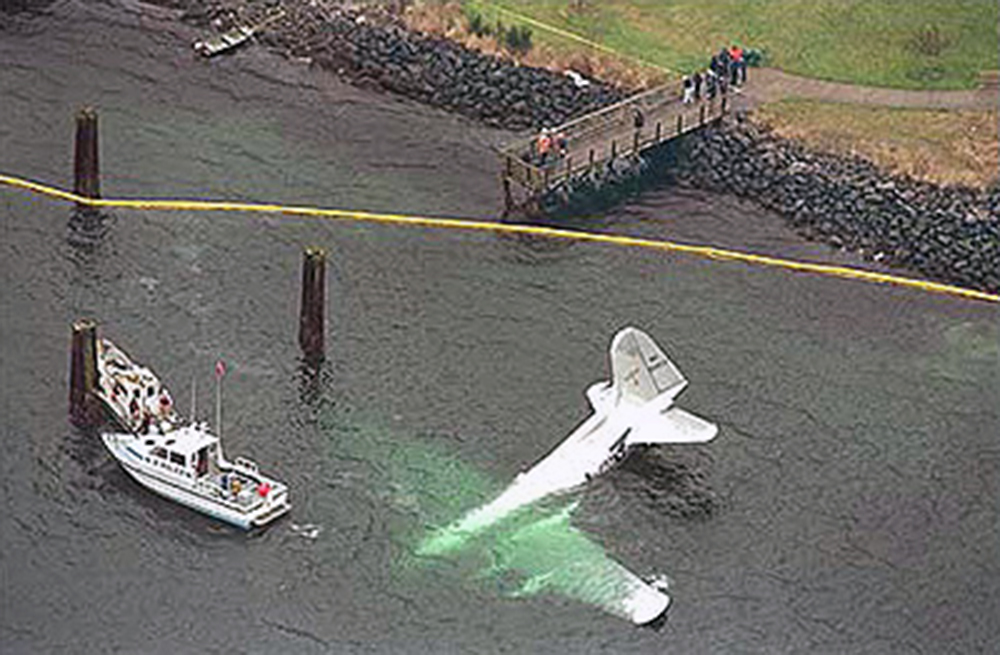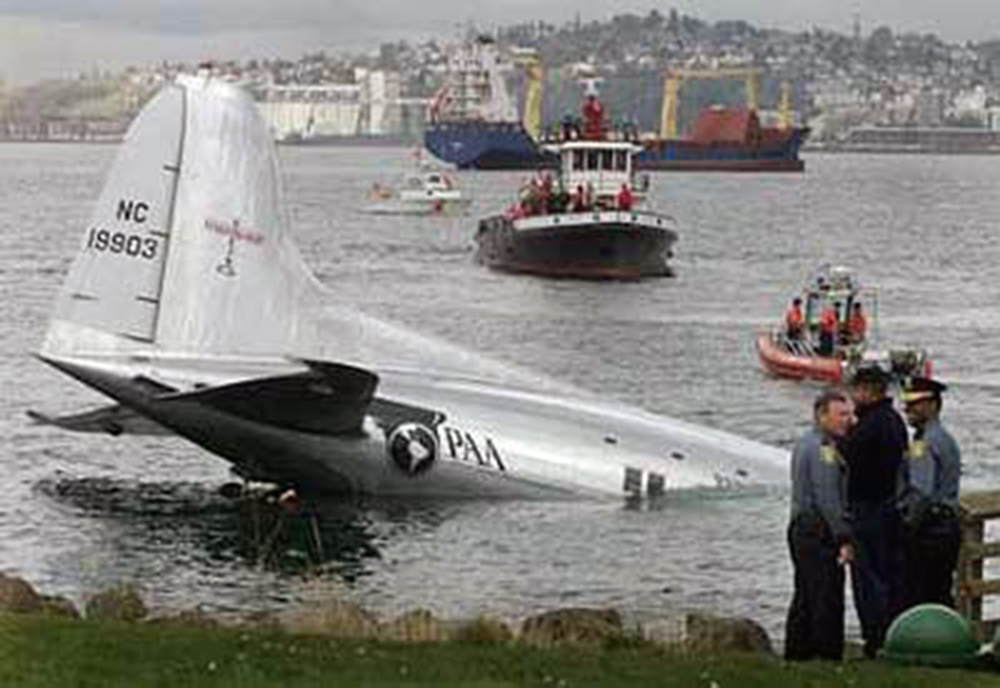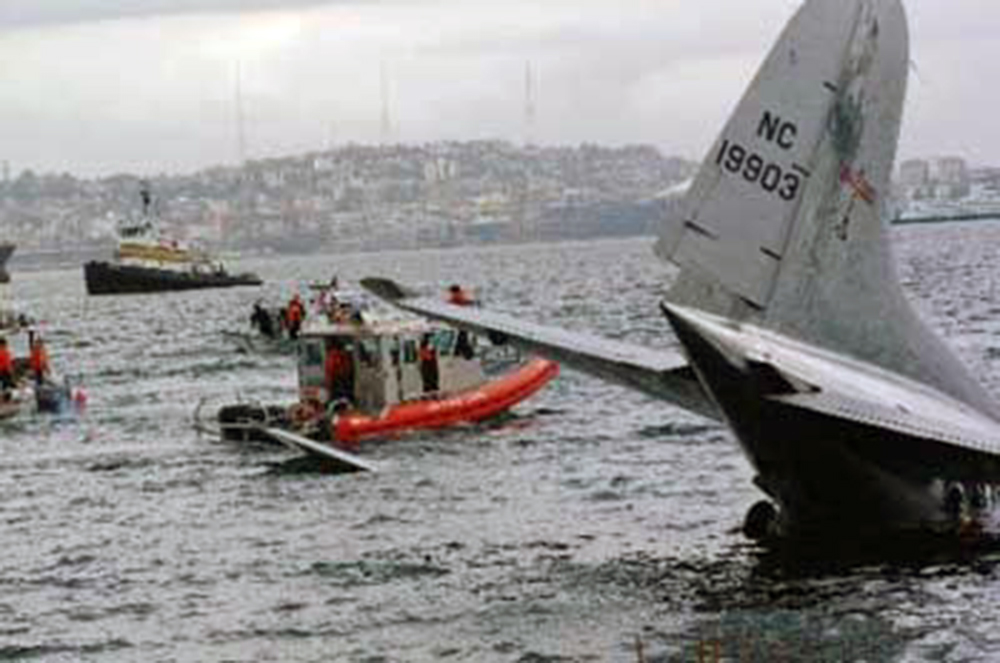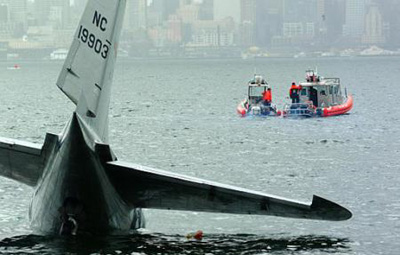Region
code
USA
Crash of a Rockwell T-39N Sabreliner off Pensacola: 4 killed
Date & Time:
May 8, 2002 at 1630 LT
Registration:
165525
Survivors:
No
Schedule:
Pensacola - Pensacola
MSN:
282-100
YOM:
1972
Crew on board:
4
Crew fatalities:
Pax on board:
0
Pax fatalities:
Other fatalities:
Total fatalities:
4
Circumstances:
Two Rockwell T-39N Sabreliner operated by the US Navy registered 165522 and 165525 departed Pensacola-Forrest Sherman Field for a training mission. In unknown circumstances, while cruising over the Gulf of Mexico, about 60 km offshore, both aircraft collided and crashed in the sea. All seven crew members on board both aircraft were killed. Debris were found about 64 km offshore, distant 10 km from each other.
Crash of a Rockwell T-39N Sabreliner off Pensacola: 3 killed
Date & Time:
May 8, 2002 at 1630 LT
Registration:
165522
Survivors:
No
Schedule:
Pensacola - Pensacola
MSN:
282-28
YOM:
1965
Crew on board:
3
Crew fatalities:
Pax on board:
0
Pax fatalities:
Other fatalities:
Total fatalities:
3
Circumstances:
Two Rockwell T-39N Sabreliner operated by the US Navy registered 165522 and 165525 departed Pensacola-Forrest Sherman Field for a training mission. In unknown circumstances, while cruising over the Gulf of Mexico, about 60 km offshore, both aircraft collided and crashed in the sea. All seven crew members on board both aircraft were killed. Debris were found about 64 km offshore, distant 10 km from each other.
Crash of a Cessna 560 Citation V in Leakey
Date & Time:
May 2, 2002 at 1430 LT
Registration:
N397QS
Survivors:
Yes
Schedule:
Houston - Leakey
MSN:
560-0531
YOM:
1999
Crew on board:
2
Crew fatalities:
Pax on board:
4
Pax fatalities:
Other fatalities:
Total fatalities:
0
Captain / Total hours on type:
733.00
Copilot / Total hours on type:
345
Aircraft flight hours:
2356
Circumstances:
After a visual approach to the 3,975 foot long by 50-foot wide runway, the turbojet airplane touched down about 2,100 feet beyond the landing threshold, and overran the departure end of the runway. The 5,600 hour pilot in command (PIC) reported that the approach speed and descent rate were "normal," and the aircraft was on short final over the trees at the "desired speed." Once the trees were clear, the aircraft descended to the runway at idle power. During the descent the PIC noticed a 16-knot increase in speed above reference. The PIC elected to continue "because the aircraft was close to the runway" and the PIC thought he had "extra landing distance to work with beyond what was required." The PIC reported that the aircraft "floated beyond the desired touchdown point," and "at this point [the pilots were] committed to stopping the aircraft." Passing the last third of the runway, the aircraft turned to the right "without" input from the pilots, overran the departure end, and collided with trees. Once the aircraft left the runway, the PIC stowed the thrust reversers and attempted to shut down the engines. Due to the "violent ride," the PIC managed to shut down one engine. A post-impact fire consumed the aircraft after the crew assisted to evacuate the occupants. No mechanical or maintenance anomalies were discovered with the aircraft. According to the flight manual, based on 29.74 inches HG, 1,808 PA, 30 degrees Celsius, zero wind, and an aircraft landing weight of 14, 500 lbs, the calculated total stopping distance (air and ground distance) at reference speed (Vref), was estimated at 2,955 feet. According to the flight manual, the "total distance" is based on full flaps, speed brakes after touchdown, Vref at 50 feet over the runway threshold, idle thrust when crossing the threshold, and no thrust reverse.
Probable cause:
The pilots failure to land the aircraft at the proper touchdown point on the runway to allow adequate stopping distance.
Final Report:


Crash of a Cessna 411 in Lee's Summit
Date & Time:
Apr 30, 2002 at 0600 LT
Registration:
N411CT
Survivors:
Yes
Schedule:
Lee's Summit - Harrisonville
MSN:
411-0097
YOM:
1965
Crew on board:
1
Crew fatalities:
Pax on board:
0
Pax fatalities:
Other fatalities:
Total fatalities:
0
Circumstances:
The airplane impacted the terrain following a loss of control during a takeoff initial climb. A witness stated the airplane was noisier than what he is used to hearing. This witness reported the airplane was in a steep left bank in a level pitch attitude. The airplane then began to descent rapidly as it turned to a northerly heading. The witness reported the airplane then seemed to enter a right bank prior to impacting the ground. Another witness reported what sounded like an engine backfire. The pilot reported the airplane lost power. Torsional twisting was visible on the propeller blades following the accident. Following the accident, the undamaged emergency exit from the airplane was found next to the runway. The latching mechanism on the exit was not damaged and the pins were not found with the exit. It was reported that the airplane had sat on the ramp at the departure airport for at least 15 years without being flown. Although the registration for the airplane had not been changed, the pilot reportedly purchased it shortly before the accident. The pilot did not hold a multi-engine rating.
Probable cause:
The pilot failed to maintain control of the airplane during the initial takeoff climb. Factors associated with the accident were the pilot's inadequate preflight of the airplane, the separation of the emergency exit, and the pilot's lack of a multi-engine rating.
Final Report:
Crash of a Piper PA-61P Aerostar (Ted Smith 601P) in Moscow: 1 killed
Date & Time:
Apr 23, 2002 at 1343 LT
Registration:
N101LT
Survivors:
No
Schedule:
Lamar - Liberal
MSN:
61-0760-8063377
YOM:
1980
Crew on board:
1
Crew fatalities:
Pax on board:
0
Pax fatalities:
Other fatalities:
Total fatalities:
1
Aircraft flight hours:
2442
Circumstances:
The airplane was destroyed during an attempted forced landing following an in-flight fire in cruise flight. The pilot was reported to be flying the airplane to an airport in order to have maintenance work performed on the right engine due to a boost problem. It was reported that the pilot had another mechanic at another airport look at the airplane. A work order for a transient airplane was found that indicated work performed on the right engine turbocharger system about 1 month before the accident. The work order shows that the wastegate oil filter was found clogged and collapsed and that it was cleaned, straightened and reinstalled. The pilot operated the airplane with a right engine boost problem. The boost problem with the right engine is evidenced by the previous work order, the excessive amount of runway used during takeoff, the reported smoke from the right engine after takeoff, and the airplane not climbing as expected after takeoff. Due to the reduced power from the right engine, the pilot was required to apply left brake in order to maintain directional control during takeoff, as evidenced by the blued left brake disk with metal transfer into the relief holes and slots. As a result of the pilot using left brake during takeoff, a fire erupted in the left wheel well, which spread to the aft fuselage. This is evidenced by the sooting, fire, and heat damage to the wheel well, the carpet above the wheel well, and aft fuselage. The fuselage immediately behind the baggage compartment had extensive fire damage. The damage in this area included blistered paint on the upper surface, and a two foot square section of the left fuselage skin that was burned away. The area that was burned away was in the vicinity of the hydraulic fluid reservoir. The aluminum hydraulic fluid reservoir was not found, only the steel filler neck, mounting screws, and cap were found. No evidence of fire was found within the right main landing gear wheel well or in the engine compartments. A witness reported seeing the airplane flying south and trailing smoke then banking to the left making a complete circle before descending and ultimately impacting the ground.
Probable cause:
The pilot's intentional operation of the airplane with a known engine boost problem resulting in the improper use of brakes to maintain directional control during takeoff, the brake system fire, and the loss of control for undetermined reasons during the emergency landing. A factor was the loss of engine power due to a restricted wastegate filter.
Final Report:
Crash of a Beechcraft E18S in Juneau: 1 killed
Date & Time:
Apr 10, 2002 at 1625 LT
Registration:
N686Q
Survivors:
No
MSN:
BA-400
YOM:
1959
Crew on board:
1
Crew fatalities:
Pax on board:
0
Pax fatalities:
Other fatalities:
Total fatalities:
1
Circumstances:
The certificated airline transport pilot was departing on a 14 CFR Part 91 personal flight. The purpose of the flight was to deliver a load of wooden roofing shakes to a friend's remote lodge. Witnesses reported that just after takeoff, as the airplane climbed to about 200 to 300 feet above the ground, the airplane abruptly pitched up about 70 degrees, and drifted to the right. The airplane continued to turn to the right as the nose of the airplane lowered momentarily. As the airplane flew very slowly the landing gear was extended. The nose of the airplane pitched up again, the right wing dropped, and the airplane descended. One witness described the descent as: "The wings rocked back and forth as it descended, like a card in the wind, with the nose of the airplane slightly higher." The airplane impacted shallow water in an area of tidal mud flats. A postaccident investigation revealed that the estimated gross weight of the airplane at takeoff was 11,500.8 pounds, 1,400.8 pounds in excess of the airplane's maximum takeoff gross weight. The airplane's center of gravity could not be calculated due to the fact that the exact location/station of the cargo could not be determined. Examination of the airplane revealed no evidence of any preimpact mechanical anomalies.
Probable cause:
The pilot's excessive loading of the airplane that precipitated an inadvertent stall/mush during the initial climb.
Final Report:
Crash of a Boeing 307 Stratoliner in Seattle
Date & Time:
Mar 28, 2002 at 1310 LT
Registration:
NC19903
Survivors:
Yes
Schedule:
Seattle - Seattle
MSN:
2003
YOM:
1940
Crew on board:
4
Crew fatalities:
Pax on board:
0
Pax fatalities:
Other fatalities:
Total fatalities:
0
Captain / Total hours on type:
62.00
Aircraft flight hours:
20577
Circumstances:
The crew had originally planned to practice landings at an airport about 20 minutes away, then stop, refuel the airplane, and subsequently return to the original departure airport. Prior to the flight, the crew discussed fuel endurance, which was calculated to be 2 hours based on the captain's knowledge of the airplane's fuel consumption, and the quantity of fuel indicated on the gauges. The fuel tanks were not dipped. The flight was made at 1,500 feet msl. Upon reaching the practice airport, the crew conducted one full stop landing, then taxied back for takeoff. During takeoff, an engine had a momentary overspeed, and the crew decided to return to the original departure airport without refueling. Approaching the original departure airport, the airplane had to delay landing for about 7 minutes for a manual gear extension. Upon completion, it turned back toward the airport, and was about 6 miles from the runway when fuel pressure for one of the engines dropped. The boost pumps were turned on; however, the engine lost power. A low fuel pressure light then illuminated for another engine. The captain called for the flight engineer to switch fuel feed to another tank, but the flight engineer responded, "we're out of fuel." The remaining engines subsequently lost power, and the captain ditched the airplane into a bay. The time from first takeoff until ditching was 1 hour, 19 minutes. The airplane had flown 39 hours since restoration, and exact fuel capacities, fuel flow calculations and unusable fuel amounts had not been established. A dipping chart had been prepared, with one person in the cockpit and one person with a yardstick putting fuel in a main tank in 25-gallon increments. However, the data had not been verified, and dipping was not considered to be part of the pre-flight inspection.
Probable cause:
Loss of all engine power due to fuel exhaustion that resulted from the flight crew's failure to accurately determine onboard fuel during the pre-flight inspection. A factor contributing to the accident was a lack of adequate crew communication regarding the fuel status.
Final Report:
